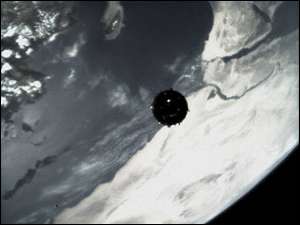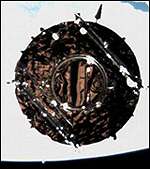| Front Page |
| World |
| UK |
| UK Politics |
| Business |
| Sci/Tech |
| Health |
| Education |
| Entertainment |
| Talking Point |
| In Depth |
| AudioVideo |

A tiny digital camera looking at the two Cluster spacecraft launched on 9 August has sent back spectacular images of the two satellites in space.
The Visual Monitoring Camera (VMC) attached to the base of the upper stage of the rocket that took them into orbit has sent back the images of the separation of the two unmanned satellites.
 Tango and Rumba start their journey
|
The two Cluster spacecraft, called Tango and Rumba, were imaged spinning against the background of the blue and white Earth and the black void of deep space.
The images were transmitted to the ground after communication with the spacecraft was established from the Kiruna ground station in Sweden.
Tango and Rumba will now rendezvous with Salsa and Samba, the two Cluster spacecraft launched last month.
They will fly in formation through the Earth's magnetosphere making measurements of the streams of charged particles and rippling magnetic fields that can cause problems for orbiting satellites and power grids on the ground.
| Search BBC News Online |
||
Advanced search options | ||
|
| |
|
| |